Unlocking the Potential of Brain Balance Exercises in Autism Support
Autism spectrum disorder (ASD) presents a variety of challenges including social, communicative, sensory, and motor difficulties. Recent research and therapeutic approaches suggest that targeted brain exercises can improve neurological functioning, potentially alleviating some core signs of autism. This article explores how brain balance exercises work, their benefits, and how they can be implemented at home to support children with autism.
Understanding the Neurobiological Basis of Autism and Brain Connectivity
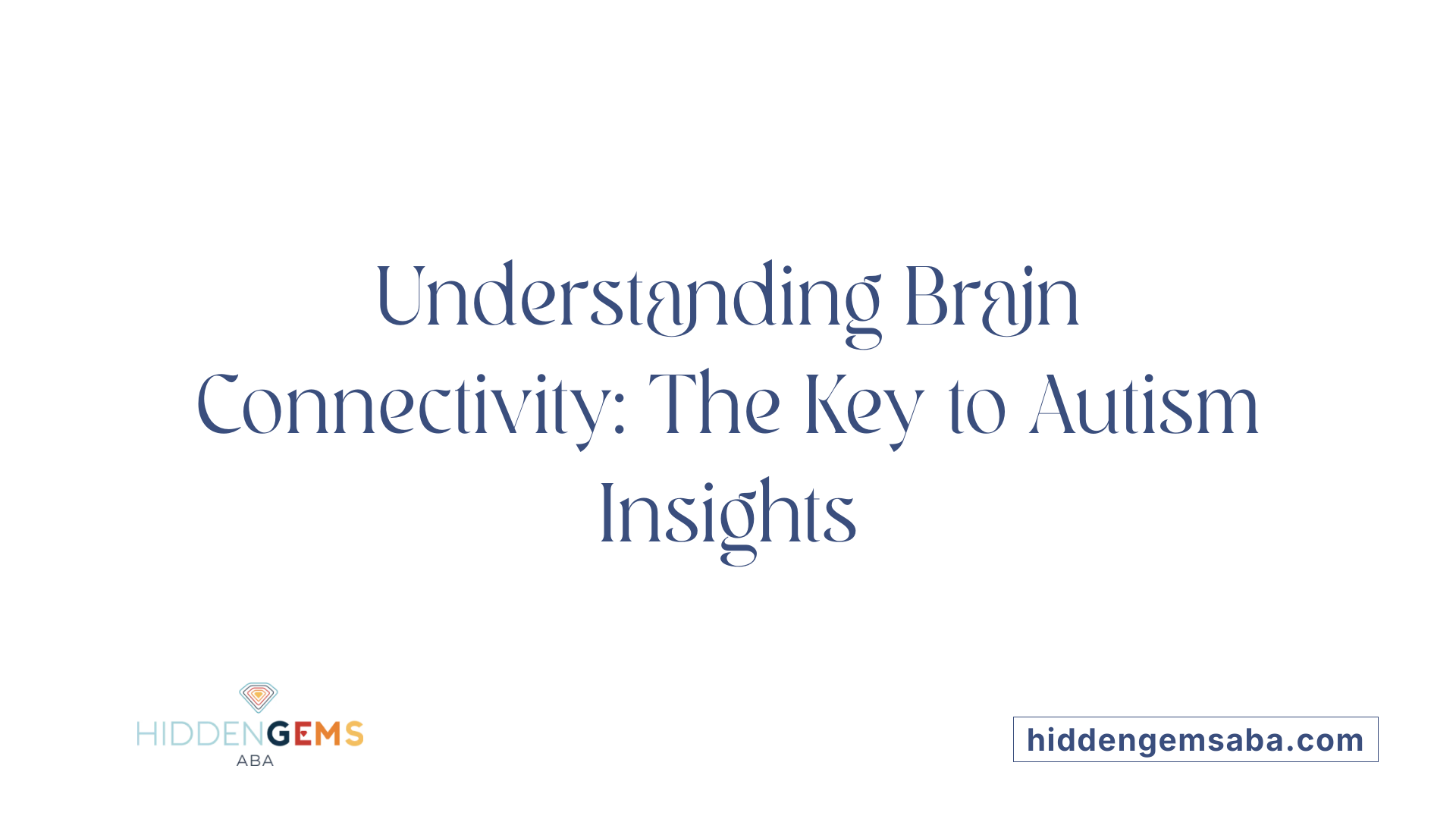
How is brain function linked to autism symptoms?
Autism Spectrum Disorder (ASD) is characterized by diverse challenges such as learning difficulties, sensory-motor deficits, social challenges, and communication issues. These symptoms are believed to stem from underlying differences in how different regions of the brain connect and communicate with each other.
Research indicates that weak or disrupted connections among brain areas can impair the integration of sensory input and cognitive processing, leading to the developmental challenges observed in children with autism. Some intervention programs, like Brain Balance, focus on strengthening these brain connections through tailored physical, sensory, and cognitive activities.
What neurobiological differences are involved, including the E/I imbalance?
A significant neurobiological aspect of autism involves an imbalance between excitatory and inhibitory signals within the brain, often referred to as the E/I imbalance. This imbalance typically involves the neurotransmitters glutamate (excitatory) and GABA (inhibitory).
Genetic variations affecting these neurotransmitter systems have been associated with differences in brain structure and function. For instance, studies have shown that children with autism may exhibit disparities in cortical thickness across different regions as they develop, reflecting altered neural circuit formation.
This imbalance can lead to excessive neural excitation or insufficient inhibition, contributing to symptoms such as sensory overload, difficulty with social interactions, and repetitive behaviors. Addressing this imbalance through targeted activities and dietary interventions aims to promote more balanced brain function, potentially alleviating some autism symptoms.
A closer look at the research
Research from institutions like Harvard points to significant reductions in hyperactivity and improvements in attention and oppositional behaviors following neuroplasticity-based interventions. These findings support the idea that strengthening neural pathways and promoting hemispheric balance can positively influence developmental outcomes.
| Aspect | Description | Supporting Research |
|---|---|---|
| Brain Weakness | Disrupted connections across brain regions | Harvard study: reduced hyperactivity |
| Neurochemical Imbalance | Imbalance in GABA and glutamate pathways | E/I imbalance evidence |
| Structural Differences | Variations in cortical thickness | Developmental studies |
| Intervention Outcomes | Improvements in cognition and behavior | Cambridge Brain Sciences research |
Understanding these neurobiological principles underscores the importance of interventions focused on enhancing brain connectivity and balance, potentially leading to better developmental trajectories for children with autism.
The Concept and Rationale Behind Brain Balance Exercises
How can brain exercises support children with autism?
Brain exercises can benefit children with autism by targeting various developmental areas such as motor skills, balance, and cognitive functions. These activities often include sensory-motor exercises like the Smell Game and Musical Brain Balance, which are designed to strengthen specific brain hemispheres. By improving muscle control, coordination, and sensory integration, children may experience better movement, increased focus, and enhanced social interactions.
The underlying principle of these exercises is neuroplasticity, the brain’s remarkable ability to reorganize itself by forming new neural connections. When children engage in targeted activities, their brains adapt and develop new pathways, potentially addressing developmental challenges associated with autism.
How brain exercises support neurological development
Targeted exercises, tailored to each child's personal assessment, encourage the weaker hemisphere of the brain to strengthen. This hemispheric balance aims to improve overall brain function, which can translate into practical benefits like better focus, learning ability, and emotional regulation.
Research supports the idea that improving neural connectivity can provide measurable improvements. For instance, studies have shown reductions in hyperactivity and better cognitive attention following participation in programs that promote neuroplasticity through exercises and nutrition.
The basis of neuroplasticity and neural pathway formation
Neuroplasticity is fundamental to the rationale behind programs like Brain Balance. The brain's capacity to adapt in response to environmental stimuli means that structured activities can help forge new connections, even in areas that are weak or underdeveloped.
This process involves engaging various regions of the brain through multisensory tasks involving rhythm, timing, and cognitive exercises. Such activities are designed to promote hemispheric balance, which is thought to support overall developmental progress.
| Aspect | Explanation | Additional Notes |
|---|---|---|
| Focus | Encourage weaker hemisphere | Strengthens neural pathways involved in motor skills and cognition |
| Methods | Sensory-motor, academic, and nutritional activities | Tailored to individual needs based on assessment |
| Goals | Improve focus, learning, mood, and reasoning | Supported by research measuring cognitive and behavioral improvements |
By combining physical, sensory, cognitive, and nutritional interventions, programs like Brain Balance aim to foster healthier brain development. This approach underscores the potential for children with autism to improve their daily functioning through exercises grounded in neuroplasticity.
Specific Brain Balance Activities and Their Implementation
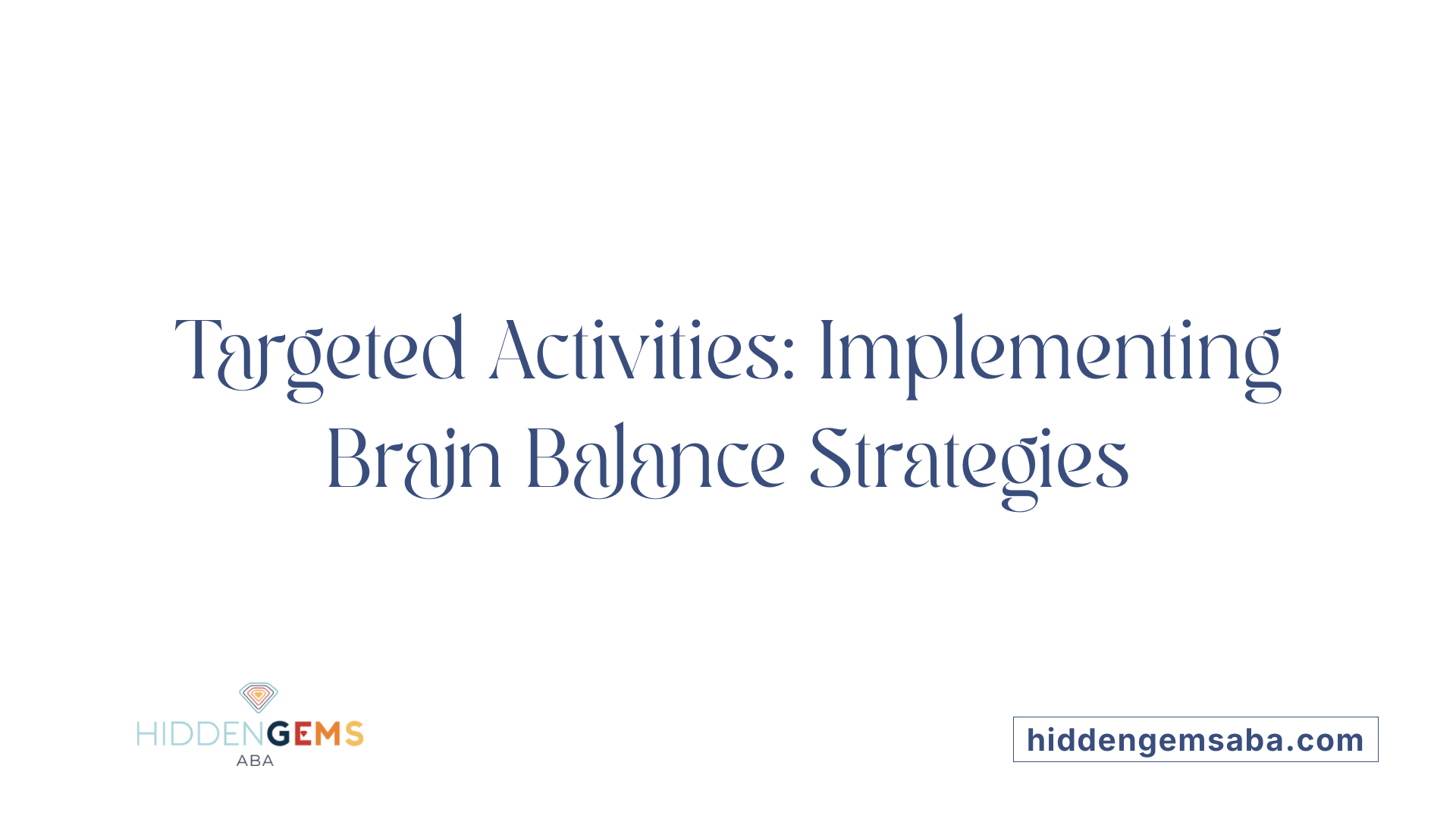
What are some strategies for supporting children with autism through brain balance activities?
Supporting children with autism involves engaging them in exercises that target core strength, sensory integration, and hemispheric coordination. These activities aim to enhance neural connections and improve brain function.
Types of exercises involved
The Brain Balance Program incorporates a variety of tasks, including physical, sensory, and cognitive activities. These are customized based on individual assessments and include balance exercises, eye movement routines, and sensory-motor tasks. Core strength activities, such as balance and coordination exercises, play a significant role.
Activities from Dr. Robert Melillo’s program
Activities derived from Dr. Robert Melillo’s book, Disconnected Kids, focus on achieving hemispheric brain balance. Popular exercises include the Smell Game, where children identify scents to stimulate olfactory pathways, and Musical Brain Balance, which uses rhythm and sound to strengthen timing and auditory processing.
Sensory, motor, and cognitive exercises
The program emphasizes multisensory engagement—using rhythm, timing, and visual and auditory stimuli. Tasks like inferential and literal comprehension exercises are included to bolster academic skills. Eye movement exercises are incorporated to improve visual tracking and coordination.
Implementing the activities
Activities are delivered either in person or virtually, with guidance from trained coaches. Each plan is individualized, ensuring exercises are suitable for the child's specific developmental profile. Regular assessments help tailor the activities, optimizing outcomes.
These strategies focus on progressively strengthening weaker brain regions, which may support better developmental and behavioral outcomes for children with autism.
The Role of Nutrition in Supporting Brain Function
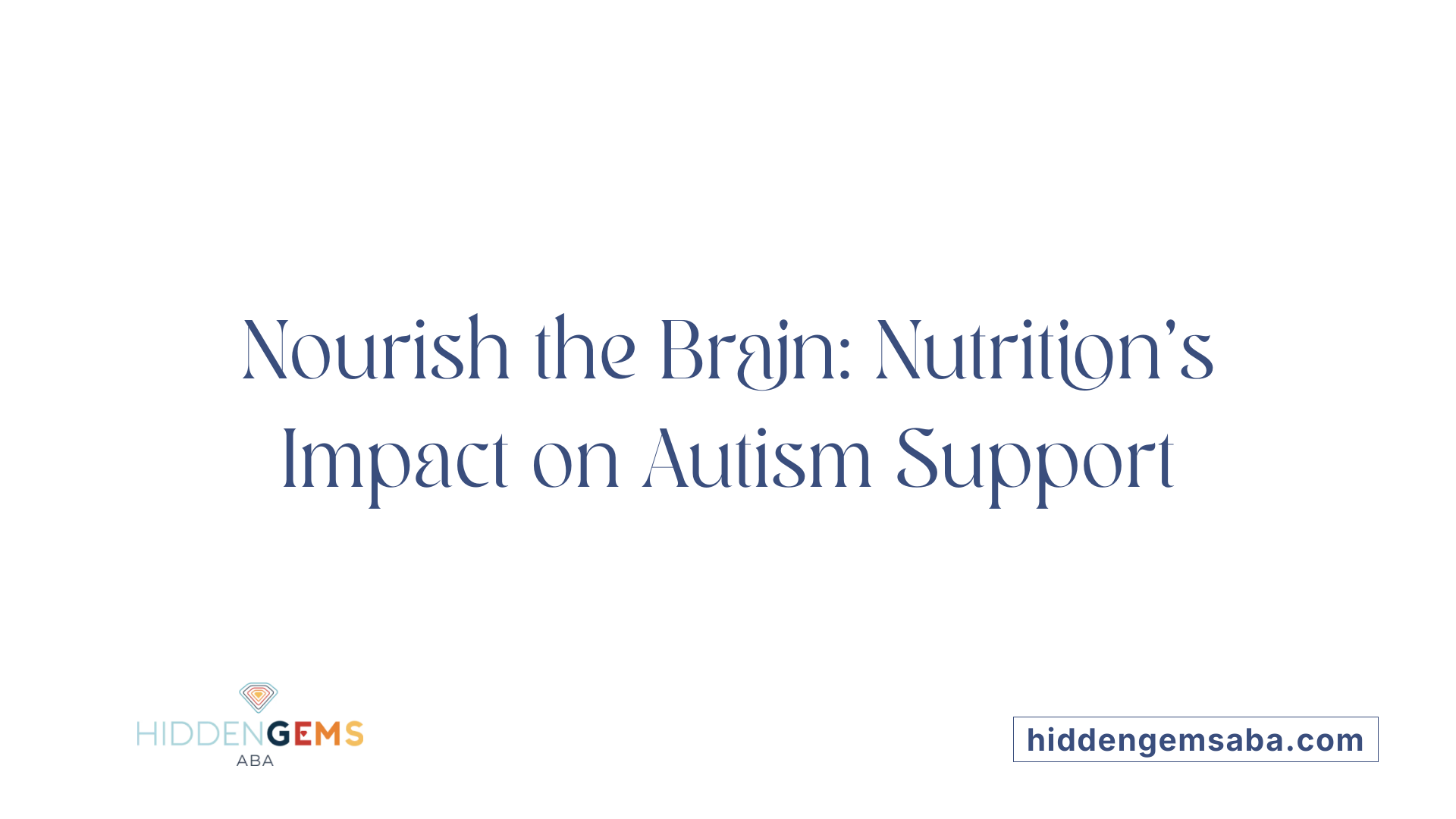
How can I improve my autistic brain?
Supporting an autistic brain can be influenced significantly by nutritional strategies. Evidence suggests that removing certain foods such as gluten, refined sugar, and dairy can help reduce symptoms associated with an imbalanced brain. These foods may react with the brain and exacerbate behavioral challenges in children with autism.
The Brain Balance Program® incorporates a nutrition component called the Balance 360 Clean Eating Nutrition System. This system emphasizes the elimination of foods that could potentially trigger or worsen symptoms, aiming to create a more balanced and healthy internal environment.
By focusing on whole, nutrient-dense foods, the program supports gut health and overall brain function. Including healthy fats like omega-3 fatty acids (especially EPA), and essential vitamins and minerals such as vitamin B6, vitamin C, and magnesium, can bolster cognitive abilities and emotional regulation. These nutrients are known to support neural development and improve communication between brain regions.
A balanced diet free from inflammatory foods may also lessen sensory and behavioral challenges, helping children to better engage with cognitive and sensory activities. Ultimately, proper nutrition is a vital part of a comprehensive approach to support developmental and behavioral improvements in children with autism.
What does the Balance 360 Clean Eating Nutrition System include?
The Balance 360 system encourages dietary habits that promote brain health. It involves removing foods like gluten, which can cause inflammation or gut issues, as well as dairy and refined sugars that may disrupt neural functioning. The goal is to ensure the brain receives the necessary nutrients to develop healthy neural pathways and function effectively.
Incorporating nutrient-rich foods helps improve overall mood, focus, and learning capacity. Children are encouraged to consume foods high in omega-3 fatty acids, fruits, vegetables, lean proteins, and whole grains. These dietary choices support the neuroplasticity-based activities of the program, which focus on strengthening weak brain connections through tailored exercises.
In sum, a targeted dietary approach, combined with physical and cognitive activities, provides a holistic method to enhance brain health and mitigate some symptoms associated with autism.
| Nutritional Focus | Key Components | Intended Benefits |
|---|---|---|
| Food Removal | Gluten, Dairy, Refined Sugar | Reduce inflammation, gut issues, and neural disruption |
| Nutrient Support | Omega-3 (EPA), B6, C, Magnesium | Strengthen neural pathways, enhance cognitive function |
| Dietary Emphasis | Whole foods, fruits, vegetables, lean proteins | Support gut health, reduce sensory and behavioral challenges |
In conclusion, nutritional strategies like those in the Balance 360 system serve as an important element of the comprehensive Brain Balance approach, aiming to support and optimize brain function in children with autism.
Benefits and Outcomes of Brain Balance Exercises
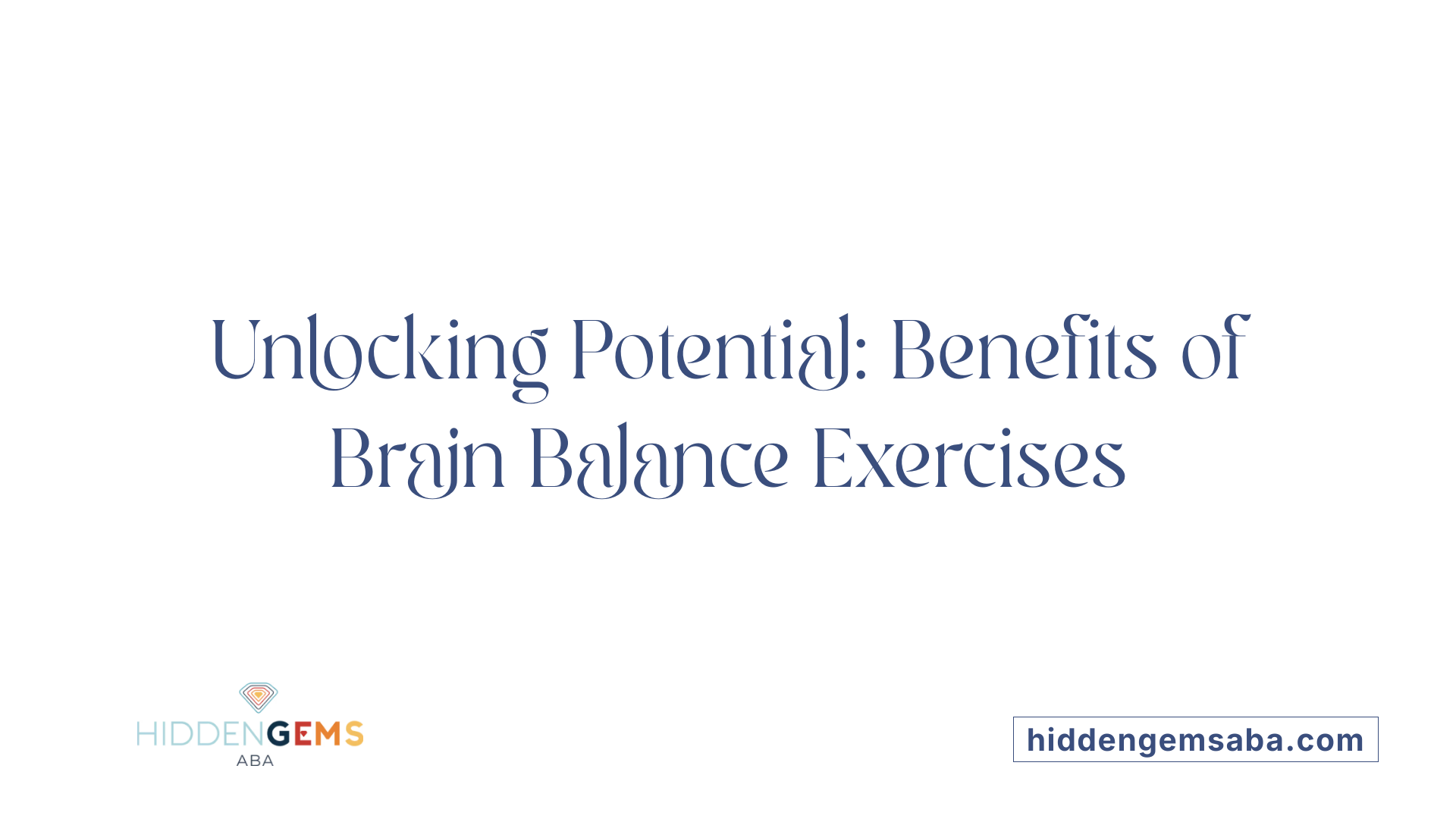
How can brain exercises support children with autism?
Brain exercises are designed to stimulate and strengthen neural connections across different regions of the brain. For children with autism, these activities can improve focus, learning, mood, reasoning, and problem-solving abilities. Programs like Brain Balance incorporate sensory-motor tasks, cognitive activities, and nutrition modifications to enhance hemispheric balance, which may help alleviate some developmental challenges.
Research supports these claims. Studies from Harvard have shown that children participating in these programs experience notable reductions in hyperactivity and oppositional behaviors. Similarly, research by Cambridge Brain Sciences reports enhancements in various cognitive skills, including memory, reasoning, and verbal ability.
The exercises are tailored to each child based on detailed assessments, ensuring that weaker areas are targeted effectively. This individualized approach aims to produce meaningful developmental and behavioral improvements, making the activities relevant and potentially more impactful.
Improvements in focus, learning, mood, reasoning, problem-solving, and self-motivation
As a result of engaging in these neuroplasticity-based activities, children often display improved concentration, better academic performance, and enhanced emotional regulation.
Nutrition also plays a role; the program's Balance 360 Clean Eating Nutrition System recommends removing foods such as gluten, refined sugar, and dairy, which may trigger imbalances in some children. Combining these dietary adjustments with targeted exercises creates a comprehensive strategy aimed at supporting overall brain health.
Research evidence supporting effectiveness
Multiple studies have shown promising results. Harvard's research indicates that children exhibit reduced attention deficit behaviors and increased cognitive focus. The Cambridge Brain Sciences project highlights gains in memory, reasoning skills, and verbal abilities.
These findings suggest that combining physical, sensory, cognitive activities with proper nutrition can positively influence brain development in children with autism. While more extensive research is always beneficial, current evidence suggests that these intervention strategies could be valuable components of a holistic developmental approach.
The Practical Aspects of Engaging in Brain Balance Activities
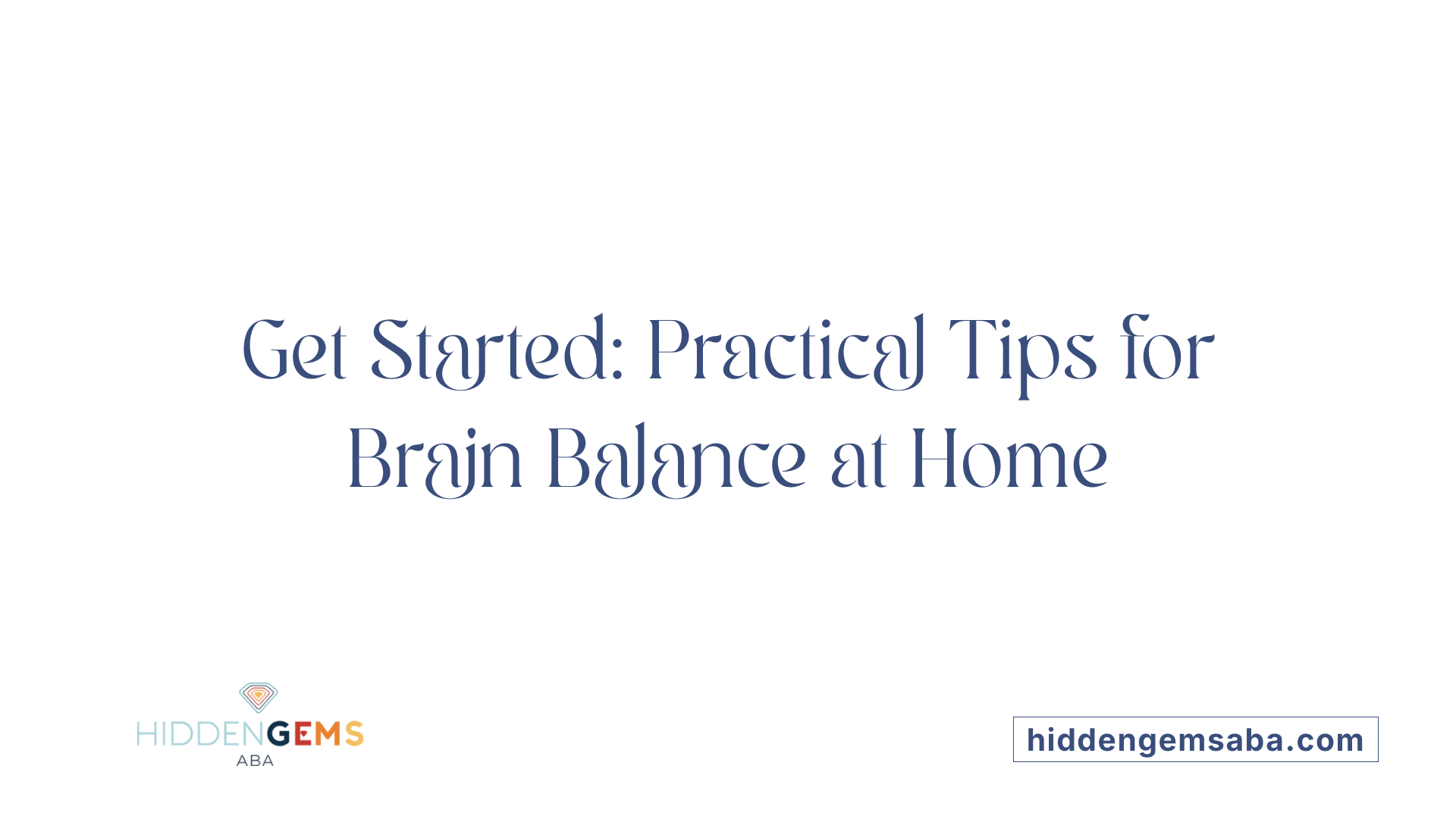
In-person and virtual program options
The Brain Balance Program offers flexible participation formats to accommodate different needs and circumstances. Families can choose between in-person sessions, where children interact directly with trained coaches at designated centers, and virtual sessions, which are conducted online. Both options involve personalized plans that focus on exercises aimed at strengthening brain connections.
The in-person approach allows for hands-on guidance and immediate feedback, while virtual programs provide the convenience of accessing the exercises from home. In both cases, the goal is to engage all regions of the brain through a variety of activities, including sensory, physical, and cognitive tasks.
How families can implement exercises at home
Implementing brain balance activities at home is practical and can be integrated into daily routines. Parents and caregivers can support children by encouraging participation in structured exercises such as core stability routines, sensory-motor games, and balance activities like standing on wobble cushions.
Using virtual sessions with coaches, families receive customized plans that include specific exercises tailored to each child's needs. Consistency is essential, so establishing a regular schedule helps children build strength and improve their skills over time.
Collaborating with professionals ensures that the activities are appropriate and effective, enabling children to experience developmental benefits aligned with their individual challenges.
Supporting children with autism through brain balance activities
Families can support children by engaging in structured exercises such as core stability routines, sensory-motor games, and balance activities like standing on wobble cushions. Virtual sessions with coaches and customized plans allow for guided home practice, making activities accessible and consistent. Collaboration with professionals ensures exercises align with each child's needs and optimize developmental benefits.
This combined approach of professional guidance and home practice aims to promote hemispheric brain balance, potentially leading to improvements in focus, learning, behavior, and cognitive skills, as supported by recent research findings.
Conclusion and Future Directions in Autism Brain Therapy
How can I improve my autistic brain?
Nutritional strategies paired with personalized brain exercises that tap into neuroplasticity present promising avenues for supporting children with autism. These approaches aim to strengthen weak connections across different brain regions, which are believed to contribute to learning difficulties, sensory-motor deficits, social challenges, and communication issues.
The Brain Balance Program exemplifies this by offering activities specifically tailored to each child's needs. These include sensory-motor tasks like the Smell Game and Musical Brain Balance, which aim to enhance hemisphere balance, and cognitive exercises such as inferential comprehension and eye movement activities that strive to boost overall brain function.
Nutrition also plays a crucial role. The Balance 360 Clean Eating Nutrition System removes foods like gluten, refined sugar, and dairy, which could trigger reactions and worsen symptoms. This combined approach seeks to engage the brain's ability to rewire itself through neuroplasticity, potentially leading to improvements in focus, mood, reasoning, and problem-solving.
The importance of professional guidance
While these programs show promise, it is essential to emphasize the role of professional oversight. Brain Balance does not require nor provide clinical diagnoses, but consulting healthcare professionals ensures that interventions are suitable and safe. A comprehensive assessment can help identify specific needs and tailor activities effectively.
With ongoing research, including studies highlighting measurable cognitive improvements and reductions in hyperactivity, the future of autism support appears increasingly promising. Integrating professional guidance with personalized exercises and nutrition may offer a holistic approach to developmental challenges.
Adopting a combination of brain exercises, dietary modifications, and expert support can open pathways for meaningful progress. This personalized, neuroplasticity-based approach underscores the potential for children with autism to enhance their skills and quality of life.
| Aspect | Approach | Benefits |
|---|---|---|
| Brain Connectivity | Customized physical and cognitive activities | Improve hemisphere balance and cognitive skills |
| Nutrition | Removing gluten, sugar, and dairy | Reduce food reactions that may impair brain function |
| Professional Oversight | Guidance from healthcare providers | Ensure safe, effective, and individualized interventions |
| Evidence | Studies showing improvements in cognition, attention, and behavior | Support ongoing development and adaptation |
Focusing on a multifaceted, tailored approach and seeking professional support will continue to shape the future of autism therapies, leveraging the brain's natural ability to change and grow.
Empowering Development with Brain Balance Exercises
Incorporating targeted brain exercises and nutrition into daily routines can support children with autism by enhancing neural connectivity and brain function. These approaches, grounded in neuroplasticity, show promising results in improving focus, behavior, and developmental skills. As research advances, personalized programs guided by professionals remain key to maximizing benefits, offering hope and practical support for families navigating autism.
References
- Autism Spectrum Disorder - Brain Balance
- Brain Boot Camp: At Home Exercises that Promote Hemispheric ...
- How Does the Brain Balance Program Work?
- Red Flags of Autism - The Children's League
- Developmental Red Flags - The Children's League
- [PDF] Early Signs of Autism
- I Have Concerns About My Child - The Children's League
- Diet for Autism | Food for the Brain Foundation
- Autism & Gut Health - Study | Food for the Brain
- Autism and the Gut Microbiome - Food for the Brain






